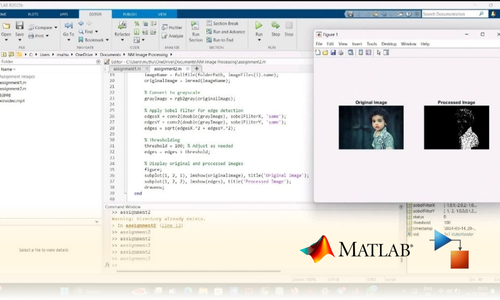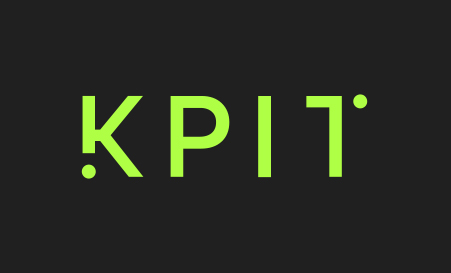
Web App Development (Java)
Internship 2025
Career-Based Complete Java Full Stack Internship Program. Get Insights into: Java, OOP, HTML etc., concepts with Project Implementation and Assignments. Stay Updated on Latest Industrial Updates.
1/ 2 Months
Online
8+ Live Projects
Dual Certification
Ultimate Step towards your Career Goals: Expert in Web App Development
Get ahead with the FutureTech Industrial Internship Program: gain hands-on experience, connect with industry leaders, and develop cutting-edge skills. Earn a stipend, receive expert mentorship, and obtain a certificate to boost your career prospects. Transform your future with practical, real-world learning today
Internship Benifits
Mentorship
Receive guidance and insights from industry experts.
Hands-on Experience
Gain practical skills in a real-world cutting-edge projects.
Networking
Connect with professionals and peers in your field.
Skill Development
Enhance your technical and soft skills.
Career Advancement
Boost your resume with valuable experience.
Certificate
Get a certification to showcase your achievements.
Web App Development (Java) Internship Overview
Java Introduction & Installation
- Overview of Java programming language
- Installing Java and setting up the development environment
- Running the first Java program (Hello World)
Java Variables, Identifiers, and Data Types
- Variables and their types
- Identifiers and naming conventions
- Primitive data types: int, float, char, boolean, etc.
- Reference data types: Classes, Objects, Arrays
Java Comments
- Single-line comments (
//) - Multi-line comments (
/* */) - Javadoc comments (
/** */)
- Single-line comments (
Loops in Java
forloop,whileloop,do-whileloop- Nested loops and examples
Decision Making Statements
if,else,else ifswitchstatement- Ternary operator (
condition ? value1 : value2)
Arrays and Methods in Java
- Declaring and initializing arrays
- Passing arrays to methods
- Method creation, parameters, and return values
- Method overloading and overloading rules
Java Package and Access Modifiers
- Creating and using packages
- Public, private, protected, and default access modifiers
Inheritance in Java
- The concept of inheritance
extendskeyword- Method overriding vs. method overloading
Encapsulation and Wrapper Classes
- Encapsulation through getters and setters
- Wrapper classes (Integer, Double, Character, etc.)
- Autoboxing and unboxing
Abstract Classes and Interfaces
- Difference between abstract class and interface
- Declaring and implementing abstract classes and interfaces
- Using abstract methods and interface methods
Java Regular Expressions
- Introduction to regular expressions in Java
- Using the
PatternandMatcherclasses
Exception Handling
try-catchblocksthrow,throws, and custom exceptions- Handling checked and unchecked exceptions
HTML Basics
- Basic structure of an HTML page
- HTML Elements, Tags, and Attributes
- Headings, Paragraphs, and Links
HTML Forms and Form Elements
- Different form elements: input fields, radio buttons, checkboxes
- Form attributes and methods (
GET,POST)
Servlets
- Introduction to servlets
- Servlet lifecycle and methods
- Handling form data, client requests, and server responses
- HTTP codes and status
- Exception handling in servlets, cookies, and session tracking
- Database access and file uploading in servlets
MySQL
- Installing and setting up MySQL
- Creating and dropping databases
- MySQL data types
- Creating, dropping, and modifying tables
- Performing CRUD operations (Insert, Select, Update, Delete)
JDBC
- Introduction to JDBC
- JDBC components and driver connections
- Writing basic JDBC code for database operations
- Transactions in JDBC




































Looking for in-depth Syllabus Information? Explore your endless possibilities in Java Full Stack with our Brochure!
share this detailed brochure with your friends! Spread the word and help them discover the amazing opportunities awaiting them.
Project Submission: Example Output Screenshots from Our Clients
Take a look at these sample outputs crafted by our clients. These screenshots showcase the impressive results achieved through our courses and projects. Be inspired by their work and visualize what you can create!













Dual Certification: Internship Completion & Participation
Earn prestigious Dual Certification upon successful completion of our internship program. This recognition validates both your participation and the skills you have honed during the internship


How does this Internship Program Work?
Step 1 Enroll in the Program
- Get a Mentor Assigned
- Presentations & Practice Codes
- Learn at your Flexible Time
- Apprehend the concepts
Step 2 Project Development
- Implement Skills Learn
- Develop Projects with assistance
- Get Codes for Reference
- Visualise the Concepts
Step 3 Get Certified
- Certificate of Internship
- Project Completion Certificate
- Share on social media
- Get Job Notifications
Choose Your Plan fit your needs
Master the Latest Industrial Skills. Select a technology domain & kick off your Internship immediately.
1 Month
₹1999/-
₹999/-
- Internship Acceptance Letter
- 90 Days from the date of payment
- 4 LIVE intractive Mastermind Sessions
- 4+ Capstone Projects & Codes
- Full Roadmap
- Internship Report
- 1 Month Internship Certificate
2 Month
₹3299/-
₹1899/-
- Internship Acceptance Letter
- 180 Days from the date of payment
- 4 LIVE interactive Mastermind Sessions
- 12+ Capstone Projects & Codes
- Full Roadmap
- Internship Report
- Participation Certificate
- 2 Month Internship Certificate
Our Alumni Employers
Curious where our graduates make their mark? Our students go on to excel in leading tech companies, innovative startups, and prestigious research institutions. Their advanced skills and hands-on experience make them highly sought-after professionals in the industry.









EXCELLENTTrustindex verifies that the original source of the review is Google. I recently completed my Python internship under the guidance of Mentor poongodi mam We learnt so many new things that developed my knowledge.this experience is good to learnTrustindex verifies that the original source of the review is Google. I completed my python internship guidance of mentor poongodi mam. She thought us in friendly qayTrustindex verifies that the original source of the review is Google. Poongodi mam done very well She took the class very well When we ask any doubt without getting bored she will explain,we learned so much from mam,marvelousTrustindex verifies that the original source of the review is Google. I have handled by poongodi mam.domain python intership...was goodTrustindex verifies that the original source of the review is Google. I recently completed Python internship under the guidance of poongodi mam who excelled in explaining concepts in an easily understandable wayTrustindex verifies that the original source of the review is Google. Fantastic class we were attended..we got nice experience from this class..thank you for teaching python mam...Trustindex verifies that the original source of the review is Google. -The course content was well-structured - I gained valuable insights into microcontrollers, sensors, and programming languages- The workshop was informative, interactive, and challenging, pushing me to think creatively. Ms Jimna our instructor her guidance and feedback helped me overcome obstacles and improve my skills.Trustindex verifies that the original source of the review is Google. The learning experience was really worth since more than gaining just the knowledge all of the inputs were given in a friendly and sportive manner which then made it a good place to learn something with a free mindset... 👍🏻Trustindex verifies that the original source of the review is Google. I recently completed my full stack python intership under the guidance of mentor Gowtham,who excelled in explaining concepts in an easily understand mannerTrustindex verifies that the original source of the review is Google. Gowtham-very interesting class and I learning so many things in full stack python development and I complete my internship in Pantech e learning and it is useful for my career
FAQ
What is the significance of the switch statement?
The switch statement is used to execute one out of multiple possible blocks of code based on the value of an expression. It’s often more efficient than multiple if-else-if statements for certain use cases.
What is the role of a doGet() method in a servlet?
The doGet() method is used to handle HTTP GET requests from the client. It’s often used for retrieving data from the server and displaying it to the user.
How can I connect a Java application to MySQL?
You can connect to MySQL using JDBC by loading the MySQL JDBC driver, then using DriverManager.getConnection() with the appropriate URL, username, and password.
What are cookies and sessions in servlets?
- Cookies: Small pieces of data stored on the client’s browser to retain user information across sessions.
- Sessions: Server-side storage of data that tracks user activity across multiple pages. Sessions are more secure than cookies.
What is the purpose of the finally block in exception handling?and sessions in servlets?
The finally block is used to execute important code such as closing resources (database connections, file readers, etc.), regardless of whether an exception occurred or not.
How do I handle database connections in JDBC?
You can handle database connections by first loading the database driver, then using DriverManager to establish a connection. Always close connections, statements, and result sets after use to prevent resource leaks.
Start Your Tech Journey Today
Sign Up for Exclusive Resources and Courses Tailored to Your Goals!
© 2025 pantechelearning.com

